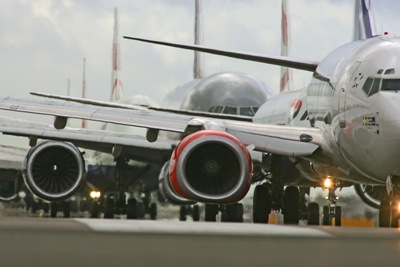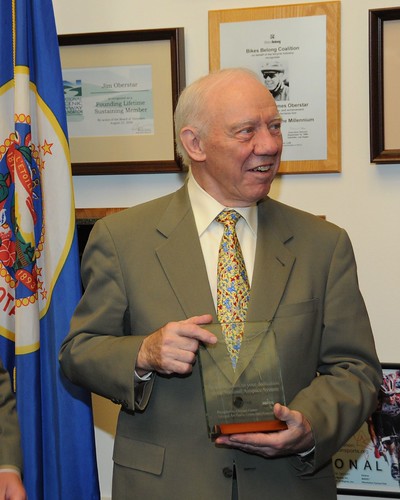
———————————————————————————————————————————————————————————–
Talking Operations Web Cast: Integrating Weather Information in TMC Operations
https://www.nhi.fhwa.dot.gov/resources/webconference/web_conf_learner_reg.aspx?webConfID=17167
Category > Opportunity: June 17, 2009 (NTOC)
This free Talking Operations Web cast, taking place August 6, 2009 from 1:00 p.m.to 2:30 p.m. Eastern Time, will describe the work that Federal Highway Administration (FHWA) has done in Traffic Management Center (TMC) weather integration, including the development of the Self-Evaluation and Planning Guide. For complete details and to register, visit the link above.
Web Briefing on Transportation Operations in Action: June 30
http://www.ite.org/education/webinars_TCWEB.asp
Category > Opportunity: June 17, 2009 (ITE)
This Web briefing is a showcase of selected presentations from the 2009 Institute of Transportation Engineers (ITE) Technical Conference and Exhibit, Transportation Operations in Action, held in Phoenix, AZ in March 2009. The presentations are representative of each track: Planning, Safety, Traffic Engineering/Design and Transportation Operations. The Web briefing is being offered at a discounted rate with support from the FHWA Office of Operations.
Date: Tuesday, June 30, 2009
Time: 3:00 – 4:30 PM Eastern
Site Fee: $15.00 (Members/Non-Members/Full-time Students)
Credit: 1.5 PDH
For more information and to register, click on the link above.
TMC Weather Integration Self-Evaluation and Planning Guide
http://www.ops.fhwa.dot.gov/weather/tmctool/registration.htm
Category > Now Available: June 17, 2009 (FHWA)
The FHWA Road Weather Management Program recently developed a self-evaluation and planning guide to help Transportation Management/Operations Centers integrate weather information in their daily operations. The Guide consists of a manual document and an electronic tool to assist TMCs in identifying their weather integration needs and selecting appropriate strategies to meet those needs. FHWA is now working with several TMCs around the country in conducting the self-evaluation using the Guide.
AASHTO and Coalition Partners United for National Freight Strategy
http://aapa.files.cms-plus.com/PDFs/2009%20Freight%20Stakeholders%20Platform%20press%20release.pdf
Category > Breaking News: June 17, 2009 (NTOC)
At one time or another, just about everything we own, from the clothing we wear to the food we eat, spent time as freight. Manufacturers, shippers and businesses rely on the Nation’s seaports, highways, railroads and airports to get their raw materials and manufactured goods to the marketplace. America’s economy depends on the ability to move freight quickly and efficiently; that’s why the Freight Stakeholders Coalition (FSC)—a 17 member organization, which includes the American Association of State Highway and Transportation Officials (AASHTO)—has released its 2009 Surface Transportation Reauthorization Platform. Read the platform through the link above.
National Conference of State Legislatures Brief on “Beyond Highway Construction”
http://www.ncsl.org/?tabid=16809
Category > Now Available: June 17, 2009 (NCSL)
As of March 31, 2009, at least 1/3 of the states that have submitted highway project lists for federal recovery act (ARRA) funding have gone beyond traditional construction by choosing to invest in “intelligent transportation systems” (ITS) technology projects that will enhance the capacity and performance of existing highway infrastructure. This National Conference of State Legislatures (NCSL) brief describes ARRA surface transportation provisions and makes the case for ITS projects as innovative, cost-effective alternatives for ARRA highway infrastructure and grant funds. To access the brief, click on the link above. For further information please contact Jaime Rall at jaime.rall@ncsl.org.
DOT Secretary LaHood, HUD Secretary Donovan and EPA Administrator Jackson Announce Interagency Partnership for Sustainable Communities
http://fastlane.dot.gov/2009/06/livability-principles-will-guide-federal-housing-environmental-and-transportation-policy-.html
Category > Breaking News: June 17, 2009 (USDOT)
U.S. Secretary of Transportation Ray LaHood, U.S. Secretary of Housing and Urban Development Shaun Donovan, and U.S. Environmental Protection Agency Administrator Lisa P. Jackson announced an interagency Partnership for Sustainable Communities to help improve access to affordable housing, more transportation options, and lower transportation costs while protecting the environment in communities nationwide.
Testifying together at a Senate Banking, Housing, and Urban Affairs Committee hearing chaired by U.S. Senator Christopher J. Dodd, Secretary LaHood, Secretary Donovan and Administrator Jackson outlined the six guiding ‘livability principles’ they will use to coordinate federal transportation, environmental protection, and housing investments at their respective agencies.
Earlier this year, HUD and DOT announced an unprecedented agreement to implement joint housing and transportation initiatives. With EPA joining the partnership, the three agencies will work together to ensure that these housing and transportation goals are met while simultaneously protecting the environment, promoting equitable development, and helping to address the challenges of climate change.
DOT Secretary LaHood said, “Creating livable communities will result in improved quality of life for all Americans and create a more efficient and more accessible transportation network that serves the needs of individual communities. Fostering the concept of livability in transportation projects and programs will help America’s neighborhoods become safer, healthier and more vibrant.”
New Online Forum Addresses Traffic Calming, Traffic Congestion, School Zone Safety and Other Traffic-Related Topics
http://www.informationdisplay.com/traffic_calming_blog/.
Category > Breaking News: June 17, 2009 (NTOC)
Information Display Company has launched Traffic Calming Matters, a blog for traffic engineers and other industry professionals interested in traffic related issues. The blog provides industry experts with a forum to discuss experiences, ask questions and share opinions on all subjects related to traffic management.
“New technologies and a growing list of newly published reports are helping to change the way professionals address traffic-related concerns,” said Gary ODell, president of Information Display Company. “This new blog is intended to help traffic engineers and safety professionals keep abreast of the latest developments and exchange ideas with each other.”
The content of Traffic Calming Matters is provided by a variety of guest writers including experts at IDC and its partner companies. Those wishing to contribute opinions or engage in dialogue with other professionals can do so through the blog’s comment section or by submitting topic ideas directly to the blog administrator.
Current posts address a variety of subject matter including the effectiveness of radar speed check signs vs. speed bumps, the benefits of traffic light synchronization and thoughts on federal stimulus money projects.
Traffic Calming Matters can be found at http://www.informationdisplay.com/traffic_calming_blog/.
New TrafficFlow Manager Works with Traffic Signal Timing to Eliminate Traffic Congestion and Reduce Fuel Consumption
http://www.prweb.com/releases/2009/06/prweb2500254.htm
Category > Breaking News: June 17, 2009 (NTOC)
A growing number of cities across the U.S. are finding the use of timed traffic signals can dramatically improve traffic flow and reduce fuel consumption. The Institute of Traffic Engineers reports that a comprehensive signal timing program can reduce overall travel time by 7-13 percent, reduce delays by 15-37 percent and reduce fuel usage by 6-9 percent.
Information Display Company, a leading developer and manufacturer of radar speed sign technology, announced the launch of TrafficFlow Manager™, a driver alert display that works with traffic signal timing to alleviate traffic congestion. When mounted along a route with timed traffic signals, the display informs drivers that the lights are synchronized and lets them know the proper speed they must maintain in order to avoid having to stop for a red light.
“TrafficFlow Manager can be a key component of a total traffic signal synchronization strategy,” said Gary ODell, president of Information Display Company. “Studies have shown that comprehensive programs that include both operational and technical components such as TrafficFlow Manager, can significantly increase the benefits these programs provide.”
A report issued by the U.S. Department of Transportation showed that a traffic light synchronization program in Texas reduced delays by 24.6 percent and fuel consumption by 14.2 percent. A similar program in Austin Texas saved commuters 2.3 million hours of their time and 1.2 million gallons of fuel usage.
Energy Efficiency/Conservation Grants – June 25 Deadline!
http://www.apwa.net/SuperPush/index.asp?ID=147
Category > Opportunity: June 17, 2009 (APWA)
The U.S. American Recovery & Reinvestment Act (ARRA) included $3.2 billion for states, local governments and tribes for energy efficiency and conservation projects under the Energy Efficiency and Conservation Block Grant program (EECBG). A total of $1.9 billion is allocated to eligible cities and counties. This is a block grant program, so for cities of 35,000 or more population and counties of 200,000 or more population (or the top ten highest populated cities and counties in each state, regardless of population) funds are allocated on a formula basis. In addition, $456 million is set aside to fund other local energy efficiency projects through a competitive solicitation process.
There are numerous “public works” related projects that can be funded under this new program. It is a tremendous opportunity to advance energy efficiency and conservation projects in local communities. If your city or county is allocated funds directly and has not yet completed its application, you are encouraged to do so by the June 25 deadline. For public works departments that may not typically apply for this type of federal grant funding, we encourage you to take this opportunity to reach out to other departments within your city or county and work with them to take advantage of the federal resources that are available.
Of note to NTOC members, the following are eligible activities under the program: transportation programs to conserve energy and installation of energy efficient traffic signals and street lighting.
Comprehensive information on the EECBG program is at: http://www.eecbg.energy.gov/. Contact your State Energy Office for information on criteria for eligibility as it may differ from state to state. For more information, please see the Web site noted above; smaller communities may contact your State Energy Office. If APWA can be of assistance, please contact Colene Roberts in Kansas City at croberts@apwa.net.
ITS JPO Lesson of the Month for June
http://www.itslessons.its.dot.gov/its/benecost.nsf/summID/LL2009-00471?OpenDocument&^LOTM
Category > Now Available: June 17, 2009 (ITS JPO)
The ITS Joint Program Office (JPO) Lesson of the Month is, “Use the Electronic Freight Management (EFM) system as a supplement to existing systems and design the EFM system flexible enough to accept and provide data about any partner within the supply chain.” This lesson describes Columbus, Ohio’s experience in the electronic freight management system deployment test. To read the complete lesson, click on the link above.
Upcoming Webinars









